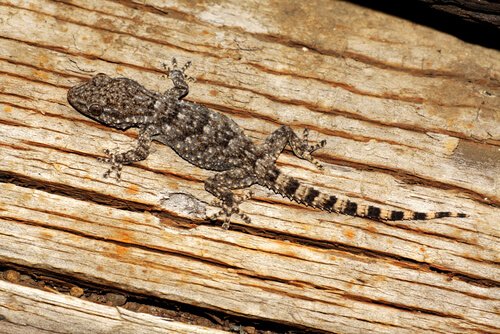Common geckos, an urban reptile
Today we introduce you to the common gecko ( tarentola mauritanica ), one of the few reptiles that adapts to urban habitats . Thus, it is found in gardens and even inside houses, where they are usually tolerated since they contribute to the fight against insects.
A reptile that knew how to expand its territory
Belonging to the family of the gekonids, this animal -inoffensive to humans- is distributed from North Africa to the Iberian Peninsula. It is also found in Italy and Greece .
Also, as happened throughout history with many species, intentionally or accidentally, came through the boats to others Destinations. In this case, to the American continent .
Its natural place is dry and hot coasts, where the sun says 'present'. But it also tends to extend its territory to the interior of countries , to areas that are not too cold. It is found in boulders, gorges, caves, trees and even under rocks.
Any place that includes cracks and hiding spaces are suitable for the gecko . For this reason, he has taken his reign to uninhabited and inhabited gardens and houses, provided there are arthropods to feed on.

We introduce you to the common gecko, a small reptile that adapted to human environments and that usually walks through the roofs and walls of houses looking for insects.
Physical appearance of the common gecko
Among the physical characteristics of the Tarentola Mauritanica we can point :
- Robust appearance.
- Measures between 12 and 16 centimeters in length.
- Your body is flattened.
- Warty skin , due to several dorsal rows of small tubers or scales.
- Long tail, which regenerates if lost.
- Wide head, which tends to be triangular ular.
- Prominent eyes, where vertical pupils stand out that dilate in the low light.
- Variable color, depending on the light and the place where it is. Its back has shades of gray, brown or black and may have spots. The belly is whitish or yellowish.
- Fingers with pads or adhesive lamellas , which act as suckers so you can walk, for example, in walls and ceilings.
- Has nails in only two of the five fingers of each extremity (the third and fourth).
Behavior of the mauritanian tarentola
The common gecko presents, generally, greater nocturnal activity. During the first hours of the day usually sunbathing. In colder regions, it hibernates. During the summer it can be seen more frequently during daylight hours.

In urban areas it is common to see her approach the lamps and run agile and quickly upside down, or vertically, in search of an insect . It is a territorial animal and, although it is usually silent, it emits sharp squawks when it fights, especially in times of mating.
The female lays two or three eggs in an almost spherical shape, and approximately one centimeter in diameter, twice a year . It deposits them under the stones, between the barks of the trees or in the cracks of the walls. The incubation time is usually 14 weeks.
The reptile that left behind the bad reputation
Luckily for her, the common gecko is not an endangered species.In captivity he can live up to eight years.


